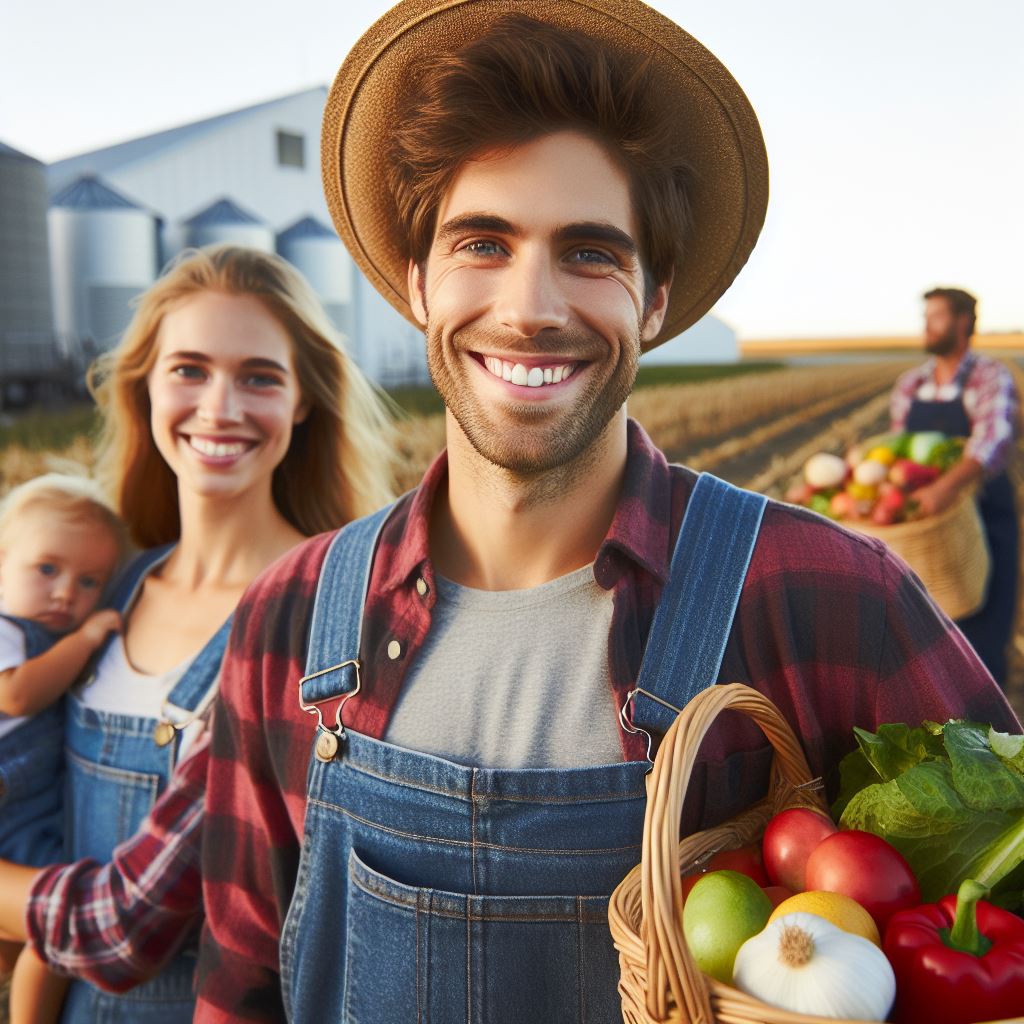Introduction
Miami Urban Farm, Miami is a city known for its vibrant culture, breathtaking beaches, and lively nightlife.
But amidst the bustling cityscape lies a hidden gem – the urban farming scene.
More and more people are turning to urban farming as a way to reconnect with nature and promote sustainability.
In recent years, the trend of urban farming has been on the rise, and Miami is no exception.
The city’s unique approach to sustainable agriculture has gained popularity among locals and tourists alike.
With its warm climate and abundant sunshine, Miami provides the perfect environment for growing a wide variety of fruits, vegetables, and herbs.
One of the main reasons for the growing popularity of urban farming in Miami is the desire for fresh, locally sourced produce.
Many residents are becoming increasingly conscious of where their food comes from and the impact it has on the environment.
By growing their own food or supporting local urban farms, they can ensure that their produce is organic and free from harmful pesticides.
Miami’s urban farm wave is a tropical tale that showcases the city’s commitment to sustainability and self-sufficiency.
It is a testament to the fact that even in a bustling metropolis, it is possible to reconnect with nature and cultivate a thriving urban ecosystem.
In the following section, we will explore some of the unique urban farms in Miami, the challenges they face, and the innovative solutions they have implemented.
We will also delve into the benefits of urban farming, both for individuals and the community as a whole.
Prepare to be inspired by the stories of Miami’s urban farmers and the tropical tale they are weaving.
The Rise of Urban Farming in Miami
Overview of the historical context and factors contributing to the rise of urban farming in Miami
- Miami, the vibrant city known for its beautiful beaches and vibrant nightlife, is now making a name for itself in urban farming.
- The historical context of Miami’s urban farming can be traced back to the increasing global concerns about food security and sustainability.
- Factors like rising population, limited agricultural land, and the desire for locally grown produce have all contributed to the rise of urban farming in Miami.
- The city’s unique climate, with its tropical weather and abundant sunlight, provides an ideal environment for year-round farming.
The benefits of urban farming for the community and environment
- Urban farming has numerous benefits for both the community and the environment.
- One of the primary advantages is increased access to fresh, nutritious produce for local residents, especially in underserved areas.
- Urban farms also promote food security by reducing dependence on imported produce and ensuring a steady supply of locally grown food.
- Additionally, urban farming helps mitigate the environmental impact of traditional agriculture by reducing transportation emissions and conserving water resources.
- By growing food in the city, urban farming also helps reduce the urban heat island effect and improve air quality.
The innovative techniques and technologies used in Miami’s urban farms
- Miami’s urban farms have embraced innovative techniques to maximize productivity and sustainability.
- One such technique is vertical farming, where crops are grown in vertically stacked layers to maximize space utilization.
- Hydroponics, a soil-less cultivation method that uses nutrient-rich water, is also widely employed in urban farms.
- Aquaponics, a combination of aquaculture and hydroponics, is another popular method that involves growing plants in water enriched with fish waste.
- Furthermore, urban farmers in Miami utilize rooftop gardens and urban green spaces to make the most of available land in the densely populated city.
In fact, urban farming has gained significant traction in Miami, driven by a combination of factors and aided by the city’s unique climate and innovative techniques.
This rising trend not only benefits the community by increasing access to fresh produce but also contributes to a more sustainable and environmentally friendly agricultural system.
Miami’s urban farms serve as a shining example for other cities looking to transform their food systems and embrace the future of farming.
Read: Urban Farming in Minneapolis: A Cold Climate
Miami’s Unique Tropical Farming Environment
Miami’s climate provides the perfect conditions for the growth of tropical crops
With its tropical monsoon climate, Miami has hot and humid summers with abundant rainfall.
The city experiences wet and dry seasons, but the overall temperature remains warm throughout the year.
This warm climate, combined with fertile soil and ample sunshine, creates an ideal environment for tropical farming.
Farming in a tropical climate offers both advantages and challenges to farmers
1. Advantages
Tropical crops, such as bananas, pineapples, and mangoes, thrive in Miami’s warm weather.
The longer growing season allows farmers to produce multiple harvests per year, increasing their profitability.
Tropical crops are often in high demand and fetch higher prices in the market, providing greater economic opportunities for farmers.
2. Challenges
Pests and diseases are more prevalent in tropical climates, posing a constant threat to the crops.
Intense rainfall during the wet season can lead to soil erosion and nutrient leaching, affecting crop production.
Transform Your Agribusiness
Unlock your farm's potential with expert advice tailored to your needs. Get actionable steps that drive real results.
Get StartedExtreme weather events like hurricanes can cause significant damage to farms, requiring farmers to implement resilient farming practices and infrastructure.
Miami’s urban farms grow a diverse range of crops, taking advantage of the tropical climate
1. Fruits
Miami’s urban farms are known for their abundant production of tropical fruits like mangoes, papayas, and guavas.
These fruits are not only delicious but also highly nutritious, providing residents with locally grown, fresh options.
2. Vegetables
In addition to fruits, Miami’s urban farms cultivate a variety of vegetables, including peppers, tomatoes, and leafy greens.
The warm climate allows for year-round cultivation, ensuring a steady supply of fresh vegetables.
3. Herbs and Spices
Miami’s tropical climate supports the growth of fragrant herbs and spices like basil, mint, and ginger.
These flavorful additions enhance the culinary experience and are highly valued by local chefs and consumers.
4. Exotic Plants
Many urban farms in Miami also cultivate exotic plants such as orchids and bromeliads.
These unique plants not only beautify the landscape but also contribute to the local floriculture industry.
In general, Miami’s tropical climate provides a favorable environment for the growth of a diverse range of crops.
While farming in a tropical climate has its challenges, such as pests and extreme weather, the advantages, such as high demand and longer growing seasons, make it an attractive option for farmers.
Miami’s urban farms take full advantage of this unique environment, cultivating tropical fruits, vegetables, herbs, spices, and even exotic plants, contributing to the vibrant agricultural landscape of the city.
Read: Houston’s Heat: Thriving Urban Farm Stories

Success Stories of Miami’s Urban Farms
Profile successful urban farms in Miami and their unique approaches
- Verde Gardens: This urban farm focuses on providing job training and employment opportunities for residents in low-income communities.
- Earth ‘n Us Farm: This farm promotes sustainable living by offering workshops on organic farming and hosting educational programs for children.
- Little River Cooperative: Known for its diverse range of organic produce, this farm operates a Community Supported Agriculture (CSA) program, allowing individuals to support the farm and receive fresh produce in return.
- Urban Greenworks: This nonprofit organization not only grows fresh produce but also focuses on community engagement through gardening workshops and implementing urban agriculture projects in schools.
The impact of these farms on the local community and economy
- Improved Access to Fresh Food: With the establishment of urban farms, communities in Miami now have increased access to fresh, locally grown produce, which promotes healthier eating habits and reduces food insecurity.
- Job Creation and Economic Growth: Urban farms like Verde Gardens play a vital role in providing employment opportunities and boosting the local economy, especially in low-income neighborhoods.
- Revitalization of Vacant Spaces: Many of these urban farms have transformed empty lots and abandoned spaces into vibrant green areas, beautifying the community and increasing property values.
- Environmental Benefits: By practicing sustainable farming methods, these urban farms contribute to environmental conservation, including reducing water usage and promoting biodiversity.
Share stories of individuals who have been positively affected by Miami’s urban farm wave
- Maria’s Journey: Maria, a single mother from a low-income neighborhood, found employment at Verde Gardens, which not only provided her with a stable income but also improved her self-esteem and allowed her to provide healthier meals for her children.
- Growing Together: The Rodriguez family, inspired by Earth ‘n Us Farm’s workshops, transformed their backyard into a small urban garden. Now, they enjoy harvesting their own vegetables and bonding over gardening activities.
- A Community’s Pride: Little River Cooperative’s CSA program has not only brought neighbors together but also fostered a sense of pride in supporting local agriculture. Members share recipes and tips, strengthening the community’s bond.
- Schoolyard Harvests: Urban Greenworks has successfully implemented urban agriculture projects in several schools across Miami. Students have learned about farming, healthy eating, and environmental sustainability, empowering them with valuable skills and knowledge.
In short, Miami’s urban farm wave has brought about numerous success stories.
Through their unique approaches, these farms have positively impacted the local community and economy.
From employment opportunities to improved access to fresh food, the benefits of urban farming are evident.
Furthermore, individuals have experienced personal growth, learned new skills, and fostered a sense of pride and community.
Miami’s urban farms are not just growing crops, but also sowing the seeds of a prosperous and sustainable future for all.
Read: Portland’s Pioneers: Innovating Urban Farm
Challenges and Solutions in Urban Farming
Common Challenges Faced by Urban Farmers in Miami
- Availability of land for farming is limited due to urbanization and high property prices.
- Contamination of soil and water sources from previous industrial activities poses a risk to urban farming.
- Inclement weather conditions, including tropical storms and hurricanes, can damage crops.
- Pest and disease control is challenging in urban environments that lack natural predators.
- Lack of knowledge and skills among urban residents about agriculture and farming practices.
Innovative Solutions Developed to Overcome These Challenges
- Vertical farming techniques have been adopted to maximize limited space, using hydroponics or aeroponics systems.
- Crop rotation and soil remediation methods are implemented to mitigate soil contamination issues.
- Greenhouse structures provide protection against harsh weather conditions and allow year-round cultivation.
- Integrated pest management strategies, such as biological controls and organic pesticides, are employed for pest control.
- Education and training programs are conducted to enhance the farming knowledge and skills of urban residents.
The Importance of Community Support and Collaboration in the Success of Urban Farming
Urban farming relies heavily on community support and collaboration for its success:
Local residents’ involvement in urban farming projects increases awareness and encourages participation.
- Community gardens and shared farming spaces foster a sense of belonging and promote social interactions.
- Joint initiatives between urban farmers, local businesses, and organizations create a sustainable and supportive network.
- Sharing resources, such as equipment and expertise, reduces individual costs and cultivates a stronger farming community.
- Collaboration with policymakers and city officials helps in creating favorable regulations and incentives for urban farming.
In a nutshell, urban farming in Miami faces several challenges, ranging from limited land availability to contamination risks and lack of knowledge.
However, innovative solutions, such as vertical farming and integrated pest management, have been developed to overcome these obstacles.
Moreover, community support and collaboration play a vital role in the success and sustainability of urban farming ventures.
By coming together, both residents and organizations can contribute to a greener, healthier, and more self-sufficient city.
Read: Urban Vineyards in Dallas: A Unique Tale
You Might Also Like: Future Farms: My Venture into Hydroponics
Future Prospects of Miami’s Urban Farming
The potential for further growth and development in Miami’s urban farming industry
- Miami’s urban farming industry has significant potential for further growth and development.
- The city’s favorable climate, abundant land, and increasing awareness about sustainable practices contribute to this potential.
- With a population that values fresh produce and healthier lifestyles, urban farming can meet the demand for locally sourced food.
- As the urban farming trend continues to gain popularity, more entrepreneurs and investors are entering the industry.
- There is an opportunity for urban farmers to innovate and adopt new technologies to increase productivity and sustainability.
- Increased collaboration between farmers, researchers, and the community can lead to advancements in urban farming practices.
- As more people become aware of the benefits of urban farming, the demand for locally grown food will continue to rise.
- Additionally, Miami’s unique ethnic diversity and culinary culture present an opportunity for urban farmers to experiment with different crops.
- The potential for expansion into rooftop farming and vertical gardening further enhances the growth prospects of urban farming in Miami.
- By transforming underutilized spaces into productive farmland, Miami can decrease its dependence on imported food and support local businesses.
The initiatives and policies in place to support and promote urban farming
- Miami-Dade County has implemented zoning codes that allow for the establishment of urban farms within city limits.
- These codes make it easier for urban farmers to lease or purchase land, ensuring the longevity of their operations.
- The county government provides resources and grants to support urban farming initiatives and encourage participation.
- Local organizations, such as Urban Oasis Project and Emerge Miami, actively promote and educate the community about urban farming.
- Miami’s Farmers Market Cooperative connects urban farmers directly with consumers, fostering a sense of community and local support.
- The city has also established partnerships with schools and educational institutions to integrate urban farming into curriculum and promote sustainable practices.
- Government-sponsored training programs educate urban farmers on best practices, ensuring their success in a competitive market.
- Miami’s Department of Sustainable Living actively promotes the benefits of urban farming through various outreach programs and events.
- The city offers tax incentives and subsidies to attract urban farmers and incentivize the growth of the industry.
- These initiatives and policies demonstrate Miami’s commitment to nurturing and expanding urban farming.
The future possibilities and benefits of urban farming in Miami
- Urban farming can enhance food security and provide residents with access to affordable and nutritious food.
- By reducing the distance between farm and table, environmental pollution caused by long-distance transportation can be minimized.
- The integration of urban farms into neighborhoods can create green spaces that improve air quality and enhance the overall urban aesthetic.
- Miami’s urban farming industry has the potential to generate employment opportunities and boost the local economy.
- By supporting local farmers, consumers can contribute to a more sustainable and resilient food system.
- Urban farming can also educate the community about the importance of healthy eating and sustainable practices.
- Miami’s urban farms can serve as educational centers, allowing residents to learn about agriculture and develop practical skills.
- The proliferation of urban farms can strengthen community bonds and foster a sense of shared responsibility for the environment.
- Increased urban farming can contribute to the preservation of biodiversity by promoting the cultivation of heirloom and indigenous crops.
- With proper planning and regulation, Miami’s urban farming industry can continue to thrive, providing both economic and environmental benefits.
Conclusion
Throughout this exploration, we’ve delved into the vibrant tapestry of Miami’s urban farm wave.
It’s a tapestry woven with threads of community engagement, sustainability practices, and innovative agricultural methods.
What sets Miami’s urban farming scene apart is its unique setting within a tropical climate.
This presents a significant tale of resilience and adaptation.
In a region often associated with sun, sand, and surf, the emergence of urban agriculture signifies a deeper connection to the land and a commitment to environmental stewardship.
As we conclude this section, I urge you to take action.
Support Miami’s urban farming community by actively participating in its growth and sustainability.
Whether it’s by frequenting local farmers’ markets, volunteering your time and skills, or even starting your own urban farming project, each contribution makes a difference.
Together, let’s nurture this tropical tale of urban agriculture and cultivate a greener, more sustainable future for Miami and beyond.




